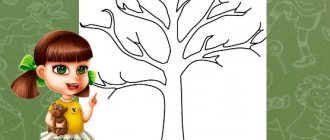▍ Cherry Mahogany Makore
It is also African Cherry, Baku, Abaku and Duca. Density 540.
Electromagnetic sensor signal with amplifier models
▍ African Mahogany Sapele
Density 694. Very similar to its relative bibolo, and is used much more often in musical instruments.
Frequency Spectra
Now the Sapotaceae family. It belongs to the famous shea tree, used as a source of cosmetic oils.
▍ Korina
And the last for today is the Combretaceae family, to which the yellow royal mahogany ofram, limba, and Terminalia splendid belong. Density 620.
Interaction with amplifiers
▍ Conclusions
So what happened in this experiment?
The same thing that happens in a real electric guitar. The string is pressed through a metal saddle and nut or fret to a structure made of wood. The vibrating energy of the strings is transmitted through these saddles, nut and frets of the body and neck structure, which also vibrates. The energy of vibrations at some frequencies is spent in heat and is absorbed into structural changes in the wood and varnish of an unplayed guitar, as many experts believe. Others do not believe in these structural changes.
Personally, I don’t know the exact answer to this question, so I won’t say so. Over time, it will be possible to conduct an experiment on the effects of mechanical vibrations of sound frequency on wood samples. The indisputable facts are that vibration to change the properties of materials exists and is used in technology. Cream is churned into butter, acoustic coagulation is used to purify water and air, during medical operations, concrete is compacted with a vibrating plate.
At other frequencies, energy is not lost and is returned to the string. The form of vibration of a ferromagnetic string depends on the composition of the harmonics, and these vibrations cause fluctuations in the magnetic field. The alternating magnetic field causes an electric current in the pickup coil, which then goes to the amplifier. The shape of this current depends on the characteristics of the mechanical oscillatory system involving wood, which was confirmed by today's experiment.
The experience of the famous guitarist Igor Kazakov (The Smokish) with electric guitars assembled from different types of wood also showed a correlation between the soundboard's own sound and the sound of the strings of the instrument connected to the amplifier.
This was followed by caricatures from those convinced of the absence or extremely small influence of wood on the sound of an electric guitar.
Another famous guitarist, guitar technician and guitar electronics researcher Kirill Shmailo (HardSound) said that for some time he believed in the thesis about the negligible influence of wood on sound, but practice has shown that it should not be neglected.
And this is a video version of my experience today:
Next, we will listen to the interaction of strings with other types of wood, we will study the reasons for the appearance of unpleasant howling overtones, the dependence of timbre on the place of sound production with a mediator on the string and muffling with the edge of the palm, we will experiment with the gauge and tension of the strings, we will move from digital models to real tube amplifiers and guitar cabinets.
And perhaps, to full-size working models of an electric guitar, on which it will be possible to play something. All materials in the series:
❒
10 different mahogany: exploring the acoustic properties of wood, part 1
❒
Wood of guitar bodies: exploring the acoustic properties, part 2
❒
Investigating the acoustic properties of wood, part 3: signal passage through the guitar amplification path
❒
Ebony Macassar, rosewood and acacia: wood guitar fingerboards.
Experiment 4: acoustic properties with different amplifiers ❒
Acoustic properties of musical wood, experiment 5: 10 more species and 2 new models of guitar amplifiers
▍ Pau Ferro, or Rosewood Santos
Family Legumes. Density 867. Along the stalk of a bean tree, Jack, and maybe Geser, and maybe Boris Ignatievich, the head of the Night Watch, went on a shamanic trip to the upper world, where he met the demon Lubsan. Or a musical instrument was made from the stem of an acacia tree, whose sound cut through not only the mix, but also the fabric of existence. What were the angles of the screw slots in relation to the strings of this mysterious instrument, history is silent. Perhaps, according to the reptilians from the lower world, we are not yet ready for this secret knowledge. But the acoustic properties of rosewood are known to musicians.
Pau Ferro does not sound as rich and balanced as Macassar ebony, but it adds a special sharpness and readability to the sound. Some people like this, others don’t (because it makes the sound more modern and can increase the “grit” in the sound).
Amp models lift lost harmonics, bringing the sound to life. Electric guitars are made to sound through an amplifier, and amplifiers are made for electric guitars.
▍ African Walnut Bibolo
Aka Lovoa, Dibetu, Tiger wood. Just a magical pearlescent shine with a three-dimensional effect, I would like to order a guitar with such a top. Density 642.
The beauty of the sound is not inferior to the appearance.
▍ Anegri
Nigerian birch or Tree of the Sun, Osan, Mukangu. Density 625. Has a pearlescent luster, similar to metal ingots. It smells like cedar.
Frequency Spectra







